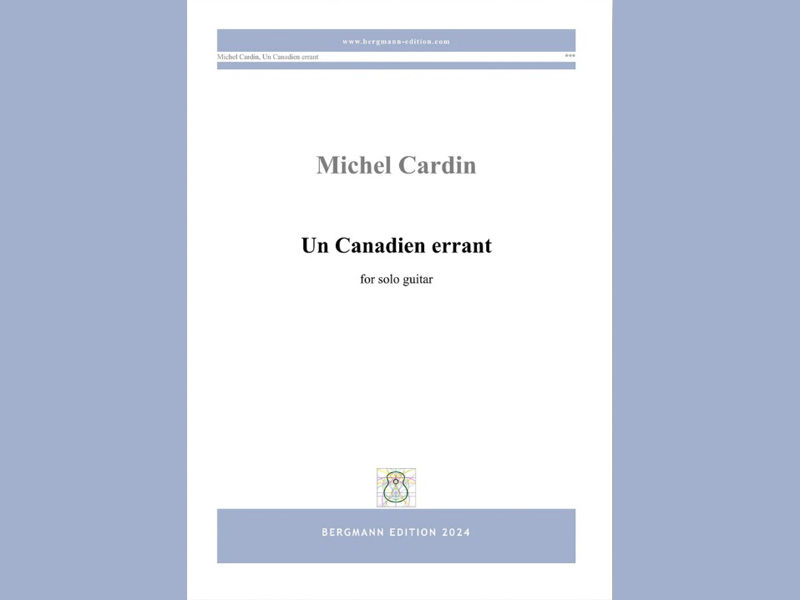Konstantin Bliokh : Sonata No3 ‘Galway ‘ : Bergmann
- chrisdumigan
- May 12, 2021
- 2 min read
Updated: Jun 5, 2022

Konstantin Bliokh
Bergmann Edition: 18 pages
Danish publisher Allan Bergmann already has a huge and impressive list of publications and composers for guitarists to choose from and just a glance at his site will enlighten any interested players as to just how wide a scope his list of oeuvres is.
Ukrainian – born Bliokh’s latest piece is sub-titled Galway was the place where the piece was written and no one should expect to find any Irish jigs or folk – tunes in this piece as its style is quite different. In fact one of the first things that strikes you about the piece is just how diverse it actually is in style, as there are a number of quite diverse elements to this three – movement work that players will probably find surprising at first glance, and also that the piece is only really for the advanced players, as nothing is even moderately difficult. Indeed there is a fine recording of this piece on YouTube by the composer that will give any interested players a clue as to just how tricky it is!
It begins with an open stringed bass drone topped by a trill on a third string G# that continues while the player hits a number of open strings and RH harmonics, followed by two resounding and somewhat dissonant chords. Then a motif, that keeps recurring of some arpeggiated chords based on intervals of a fourth. A speed change then brings about some very fast runs topped with a number of diverse percussive elements all carefully explained on the page concerned. All these extremely different elements alternate, often at different speeds from each other, in a way that could seem confusing but are succinctly explained in the detailed Preface.
The second movement is on two staves throughout with the second being used for the multiple percussive effects , whereas the main stave has some jazz –like chords at the opening, with even the movement being headed ‘alla jazz trio’. The hardest part of this movement is the seamless introduction of the percussive effects in between the main themes.
The final movement begins with sturdy six string chords alternated with very fast upward motioned runs , and again interspersed with some percussion. Time signatures are varied here with the opening 4/4 alternating with 5/4, 7/4, 10/8, 7/8, 5/8, 6/4 and 3/4 throughout its 78 bar span. There is a middle section of a waltz theme before the opening returns .The waltz however does make a re-appearance before a variation of the opening of the first movement together with its harmonics closes off the piece.
As I stated before the structure is carefully explained in the composer’s Preface and the piece is very varied and full of constant action with the percussion taking the front row almost throughout the three movements, and it is a very exciting piece to attempt, but it is extremely difficult, so any interested parties might check the video on YouTube first.
Chris Dumigan




Comments